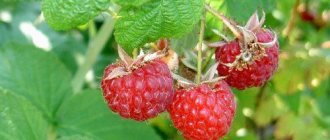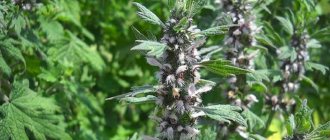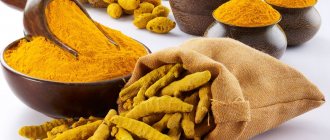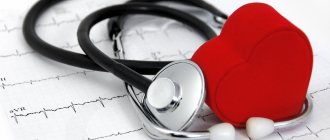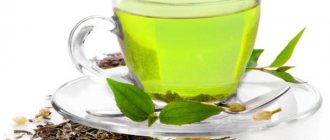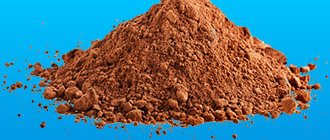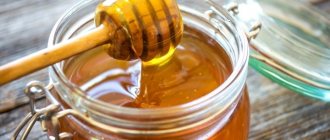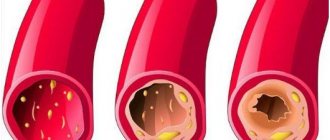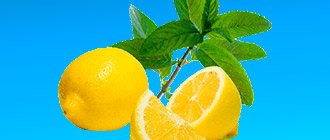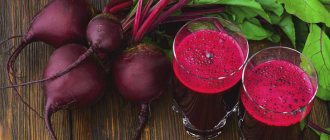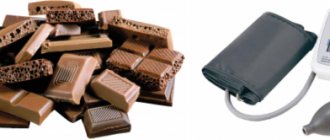Salt norm for the body
Salt is the main source of sodium, which is responsible for regulating water-salt balance and ensuring the transmission of signals between cells of the nervous system. Chlorine is necessary for the normal functioning of the liver, being the main component of gastric juice.
For an average person living in a temperate climate, the daily sodium intake is 5-6 g, which is equivalent to 10-15 g of salt. This microelement enters the body with other products. Regardless of how salt affects blood pressure, you should consume no more than 6 g of salt per day. This dosage is not recommended to be exceeded during pregnancy and breastfeeding.
Normal for humans
The amount of sodium chloride plays a huge role in maintaining the health and functioning of the body. It is usually indicated in the range of 4–6 grams. Since salt and pressure are inextricably linked, the level of the product is determined by the patient’s condition.
Also read: The best berries for high blood pressure If he has hypertension, the doctor will recommend not to exceed the consumption rate or reduce it to a minimum.
Be sure to take into account not only the “pure” crystalline powder that we add to our food, but also that which is present in almost all prepared foods, especially in fast food. Modern man consumes ready-made food almost three times the recommended amount.
Can salt raise blood pressure?
With a one-time or standard intake of salt into the body, the brain region neutralizes excess sodium. With its constant use in large doses, an increase in blood pressure is observed. The accumulation of sodium causes fluid retention and thirst. Vessels and epithelial cells begin to swell, organs receive less blood. To raise blood pressure and normalize blood circulation, the endocrine system releases adrenaline into the body, causing vascular tone. The heart pumps a huge volume of blood, placing stress on the heart muscle.
Product Limitation
Salt for hypertension should be limited so as not to provoke further development of the disease. The consumption of this food product should be halved. This refers not only to the amount of food additive in ready-made dishes, but also in other products consumed during the day.
When preparing dishes with seasonings, semi-finished products and sauces, you need to add salt to already cooked dishes, since the ingredients already contain a sufficient amount of this food additive - this way you can adjust your salt intake.
It is advisable to limit the use of semi-finished products to the maximum, since their composition, in addition to salt, additionally includes sodium, which contributes to the retention of water in the body. This rule also applies to soup concentrates, the composition of which is 60% salt.
You should include foods containing magnesium in your diet:
- spinach;
- chicken eggs;
- walnuts and pine nuts;
- cashew nuts;
- oatmeal;
- soy;
- rice (unpolished);
- buckwheat;
- almond.
They will help strengthen the nervous system, increase the functions of the cardiovascular system, and relieve signs of overwork and fatigue. These products will help the body normalize blood pressure. People with severe heart problems and kidney failure may be prescribed a salt-free diet.
Using sea salt
Compared to regular salt, sea salt contains a huge amount of potassium, iodine, phosphorus, manganese, and boron. For high blood pressure, this is the best substitute due to the low concentration of sodium chloride. This product is used both in pure form and with herbs or spices. Sometimes it is additionally enriched with iodine, so the crystals are brown.
If you have allergies, it is better to avoid using the product, which is often taken for excess weight, hypertension and diseases of the endocrine system. Sometimes chitosan is added to sea salt, which has a positive effect on the body:
- helps tolerate lactose;
- removes excess sodium and toxins;
- does not allow fats and cholesterol to be absorbed;
- strengthens the immune system.
That is why this substance is used as a prevention of excess weight, hypertension, diabetes, and atherosclerosis.
Attention! Sea salt is consumed in the same portions as herbs.
What effect does salt have on blood pressure?
Patients who suffer from hypertension or are overweight often seek help from a doctor because their condition does not normalize. If a person with hypertension is obese, there is a high chance of developing metabolic syndrome. Normalizing your weight will help lower your blood pressure.
Sodium increases blood pressure
On average, 1 kilogram of fat reduces blood pressure by 1 mm Hg. Art. But no doctor can guarantee that the pressure will drop to the normal level of 120/80. Obesity is not the only cause of high blood pressure. Many people consume large amounts of table salt. They may not notice the relationship between pressure and this mineral.
In 1904, two scientists determined the relationship between blood pressure and sodium intake. This assumption was confirmed by Russian doctors. In provincial Japanese towns, people consume at least 25 grams of this substance every day, so half of the entire population faces hypertension.
The level of magnesium and sodium in the blood increases. Such processes lead to an increase in cardiac output and an increase in heart rate. The heart may not be able to cope with the increased volume of blood, so the patient experiences symptoms of tachycardia.
If the amount of this mineral is not controlled, there is a high risk of developing hypertension, stroke and myocardial infarction. Many people experience hypersensitivity to excess amounts. They experience symptoms of hypertension, and electrolyte disturbances occur in the body.
There are countries in Central Asia where local residents do not use salt at all. They carefully monitor their diet and include more fruits and vegetables. Therefore, blood pressure in older people is normal. Signs of hypertension occur in 1.5% of the total population.
Other salt replacement options
The product is replaced with soy sauce, but it must be of high quality and not cheap. Added to food in small portions. In winter, dried greens, especially celery, become a good analogue of salt. When preparing food, you can use various herbs infused with olive oil.
Natural salt, which increases blood pressure, is retained in foods to the maximum if food is cooked on the grill or using a double boiler. Because cooking and frying greatly change the taste of the dish. You can replace the product with dried seaweed, which contains many vitamins and minerals. It is indispensable for the prevention of hypertension. Also uses dried garlic.
Sodium potassium and salt for hypertension
In food products, especially of natural origin, the potassium content is much higher than sodium. For example, in fish and poultry meat the potassium content is 4 times higher than sodium. In dairy products it is three times, and in vegetable products it is 50 times. If you salt these products, the ratio of elements completely changes.
For example, in salted fish or cucumber the amount of sodium is much higher than the potassium content. Nowadays, modern nutrition is very harmful to health. At a regular lunch, when using sauces, ketchups, seasonings, the ratio of potassium to sodium will be no more than 0.2 -0.3. But if you eat the original products without using these products and salt, the ratio will be increased 10 times.
The body does not have enough salt, it craves something salty. It is a myth! It has been proven that the desire to taste salty foods is a habit that is acquired over the years. The food that we buy in the store is already saturated with table salt. Many people also sprinkle it on their food with their hands.
Then they wonder why the tonometer shows high blood pressure. It is important to note that the human body is individual. One person can salt food and have blood pressure like an astronaut. For the second, a pinch of salt is enough for the pressure to increase by 30-40 mmHg. Art.
Foods containing sodium and potassium
The potassium-sodium balance is maintained in all products. There is 5-10 times more of the first element compared to the second. Although with a normal diet, sodium intake increases, even if the food is not salted, because it is contained in all additives to improve taste. Therefore, there is a lot of salt in sausages, pickles, marinades, and smoked products. It is also found in sweets, bread and cheese.
A high concentration of sodium is found in seafood and egg yolk. To avoid the appearance of edema, it is necessary to add raw vegetables and fruits rich in potassium to the diet. During industrial and thermal processing, its value is lost. Potassium is practically not absorbed if there is a lack of magnesium, so it is recommended to eat pumpkin seeds daily. Caffeine removes most microelements from the body. In purchased bottled water, the composition should be dominated by potassium, not sodium.
Cellulose
Let's now talk about fiber. In terms of healing properties, this is a product that has no equal. Fiber reduces mortality from all causes (including cancer). Reduces the chance of developing diabetes and protects against cardiovascular diseases.
But most importantly for us, it protects against the progression of hypertension. Therefore, be sure to use fiber for nutrition with high blood pressure.
What contains fiber? Usually these are vegetables and fruits. Among vegetables, this is especially broccoli. As for fruits, these are mainly pears and plums. They are all very rich in fiber.
It is also necessary to mention oatmeal. This is also a very healthy product, rich in fiber. It’s not for nothing that all cardiologists recommend eating oatmeal in the morning.
Whole grains also contain fiber.
Look here. What we eat (like bread or pasta) is not whole grain. There is practically only starch there. But it is precisely those useful biological substances that are found in the remaining elements of the grain that, unfortunately, are discarded.
So if it's rice, you don't need to eat white rice. There is a huge glycemic load and there is no benefit. But you need to eat brown or wild rice.
That is, fiber must be required and in large quantities.
Green vegetables are also essential for normalizing blood pressure.
How to minimize consumption if you have hypertension
There are some rules that can help you reduce the amount of sodium in your food:
- The product should not be added to dishes during cooking, especially for semi-finished products.
- It is advisable to add as many unprocessed vegetables and fruits as possible to your daily diet.
- To get rid of the habit of salting everything, it is recommended to remove this product from the table.
Simple recommendations will help reduce salt intake, which is especially important for hypertension.
Life under pressure. salt and hypertension
The development of arterial hypertension is directly related to the amount of salt in the food on your table. Hypertension is a disease that needs to be treated. To do this, you will have to give up many everyday habits. For example, from excessive consumption of salt.
The physiological norm of daily sodium intake (Na) is 3.5 grams. This amount is contained in approximately 5.0-5.5 grams of table salt (NaCl salt).
In accordance with the recommendations of the World Health Organization, the upper limit of salt intake for healthy people is 6 grams per day, and for arterial hypertension - 5 grams per day. And this takes into account the salt contained in bread, canned food and other foods!
Choosing foods that contain a safe amount of salt is not an easy task. To do this, we recommend that you often use reference tables containing the necessary information, and also look at the salt content of food products on their packaging.
A small amount of sodium chloride contains provisions of plant origin, cottage cheese, fresh or frozen fish, meat products (up to 0.1 g per 100 grams). By the way, ready-made gastronomic delights contain much more salt than natural ones. For example, sausage is 10-15 times saltier than meat.
The tendency to excessively consume standard baked goods leads to an unfavorable combination for people with hypertension - with bread, along with excess calories, the body also receives excess sodium chloride. The exception is special dietary products with low sodium content and high fiber content.
It is better to remove the salt shaker from the table
Table salt is usually found in small quantities in natural products, but after special processing and canning, the amount of seasoning in them increases significantly. Therefore, it is recommended to consume canned, salted, smoked foods only in small quantities and not every day.
As for cooking, you should not add too much salt to your dishes, and to improve the taste, it is recommended to add herbs and spices. The habit of adding salt to food at the table without tasting it is worth giving up completely.
It will also be beneficial for your health to replace regular salt with iodized salt. Iodine deficiency is a common pathology, especially among young children and women. One of the modern ways to prevent iodine deficiency is universal salt iodization.
Reducing salt intake leads to a significant decrease in systolic (“upper”) and diastolic (“lower”) blood pressure, and subsequently to a decrease in left ventricular hypertrophy.
Potassium vs Sodium
People with high blood pressure are differently sensitive to salt loads. In those with higher levels, even a small sodium load causes an increase in mean arterial pressure by 10 mm Hg. Art. and more. Reducing sodium intake and increasing potassium intake from food leads to a decrease in blood pressure by 2-8 mmHg. Art.
It has been established that potassium contained in food reduces the adverse effect of sodium chloride on the vascular wall, reduces vascular hyperreactivity, has a beneficial effect on the heart muscle, and helps remove excess fluid from the body.
Therefore, hypertensive patients are recommended to consume more foods containing potassium salts, and it is important to take into account not only their content, but also the ratio of sodium chloride (table salt), which should be equal to 1.
With a physiological need of about 3-5 grams per day, people with hypertension are recommended to increase the consumption of potassium salts with food to 5-6 grams per day.
A significant amount of potassium (more than 0.5 grams per 100 grams of the edible part of the product) is found in apricots, beans, seaweed, prunes, raisins, peas and potatoes (baked in their jackets).
A large amount of this valuable element (up to 0.4 grams per 100 grams of product) is contained in beef, lean pork, cod, hake, mackerel, squid, oatmeal, green peas, tomatoes, beets, radishes, green onions, currants, grapes, apricots.
Don't forget about the importance of eating foods containing magnesium. Regular intake of this valuable substance into the body has a beneficial effect on the state of the nervous system and vascular tone. Foods rich in magnesium are bran, beans, oatmeal, prunes, seaweed and millet.
sodium salts in mg per 100 g of product:
| № | Product | (mg) |
| 1. | Cereals | |
| Semolina | 10 | |
| Cereals: rice, Hercules, corn | 26 | |
| Buckwheat | 33 | |
| Pasta | 28 | |
| Wheat flour 1st grade | 12 | |
| Baking | 270 | |
| Crackers | 528 | |
| Bread made from 1st grade flour | 488 | |
| Rye bread | 1100 | |
| 2. | Meat products | |
| Meat (beef, pork, lamb) | 20 | |
| Chickens | 10 | |
| Fish | 20-100 | |
| Egg | 55 | |
| Boiled sausages, frankfurters, wieners | 830 | |
| Semi-smoked sausages | 1600-1700 | |
| Raw smoked sausages, smoked products (ham, neck, ham) | 2000-2200 | |
| 3. | Dairy products, butter | |
| Milk, yogurt, kefir, ice cream, cottage cheese | 50 | |
| Butter | 74 | |
| Pickled cheese | 1500-2000 | |
| Hard cheese | 940-1000 | |
| Sunflower oil | 0 | |
| Margarine | 187 | |
| 4. | Vegetables | 10-80 |
| Potato | 28 | |
| Cabbage, carrots | 10-20 | |
| Beet | 86 | |
| Beans | 40 | |
| Lentils | 100 | |
| Peas | 70 | |
| 5. | Fruits, berries | 10-30 |
| Fruit juices | 3 | |
| Jam | 9 | |
| Dried fruits | 100-200 | |
| 6. | Sweets | |
| Marshmallows, marshmallows, marmalade | 0 | |
| Sugar, coffee, chocolate | 1-2 | |
| Tea | 82 | |
| Candies | 10-20 | |
| Halva, cookies, cakes | 40-80 | |
| 7. | Canned food | |
| Canned green peas | 2000 | |
| Canned vegetables, tomato puree, vegetable caviar | 300-700 |
- High blood pressure can lead to myocardial infarction, cerebral stroke and kidney failure. Myocardial infarction and cerebral stroke, in turn, are the leading causes of mortality in the population.
- The desire to eat over-salted food is not physiologically justified. Therefore, it is necessary to fight it like any bad habit.
- Every person with arterial hypertension should follow the following recommendations to reduce salt intake:
1. Eliminate foods containing a lot of salt (canned, salted, smoked).
2. Pay attention to the labeling of products that have undergone special processing and the salt content in them.
3. Increase consumption of foods low in salt (vegetables, fruits).
4. Reduce the amount of salt added during cooking.
5. Before automatically adding salt to food, you should first taste it, and it is better to not add enough salt at all.
Tatyana Tarutina, cardiologist, Arkhangelsk Center for Medical Prevention, newspaper “Our Health. Arkhangelsk region", No. 1, 2020
Salt room at home
Mostly, medical procedures are carried out in specialized salons or sanatoriums. If you are unable to visit such places, you can create a healing room in your own home. Nowadays you can buy lamps that are made from salt crystals. The device helps purify the air, strengthening the immune system. The salt lamp is created from a block of crystalline rock, inside of which there is a light bulb. The heating component ionizes the air. Ions with a minus sign normalize the ionic structure of the room.
Salt under the tongue from what kind of pressure
There is an opinion that when the pressure drops, accompanied by a sudden loss of strength, you can put several large salt crystals under the tongue.
Indeed, fluid retention in the body, the release of adrenaline and vasoconstriction sometimes helps to normalize the condition of hypotension.
However, this method can be used only in extreme cases, and never resort to resorption of crystals for the purpose of prevention.
As emergency therapy, you can use both sea and regular table salt, sifted through a sieve with large mesh.
Salt room and salt caves for hypertension
Premises with a therapeutic microclimate are characterized by increased air ionization, low concentration of allergens, average humidity and temperature. Just 2-3 visits to such a room will improve a person’s condition. At the first negative manifestations, you should refuse treatment.
Attention! The therapeutic course ranges from 9 to 15 sessions.
Main indications of the cave:
- allergy;
- heart diseases;
- respiratory tract diseases;
- frequent colds;
- rashes.
This treatment is prohibited if you are pregnant, have a malignant tumor, drug or alcohol addiction, acute tuberculosis, or severe forms of mental disorders. The salt room is recommended for high blood pressure of the first and second stages, but is contraindicated in case of exacerbation of the disease.
Diet for high blood pressure for women and men
The main principles of the diet:
- Reducing the energy value of food taking into account the body's energy consumption. Protein/fat/carbohydrate balance – 100 g/80 g/4 g.
- Reducing the daily dose of salt to 2 g. In acute hypertension, hypertensive crisis is completely excluded from the menu for 5-7 days.
- To prevent blood pressure levels from rising, animal fats and fatty acids are removed from the diet. More products with nicotinic, ascorbic acid, thiamine, potassium, and magnesium are introduced.
The salt-free diet lasts 7 days and is carried out under the supervision of a specialist 2-3 times a year.
There is such a very effective diet for high blood pressure for women and men. Let's talk about her a little too.
In general, a person with hypertension should also have a lot of vegetables in their diet. There must be at least 400 grams of vegetables. This is the minimum from which you need to plan your diet.
So we need:
- minimum meat (1 serving per week)
- 1 yolk per day. Protein doesn't count here. You can eat 2 - 3 egg whites. This is a completely different product
- Minimum refined carbohydrates
- Minimum sugar. This is also a refined carbohydrate
- And maximum movement
This is the basis of nutrition for high blood pressure.
There is a diet called Dazh in the world. This is the most famous diet, which for many years has been considered the best diet for high blood pressure and cholesterol.
This special diet is for hypertensive patients. Its foundations are the principles listed above.
Once again I would like to discuss with you what a diet should be for high blood pressure and excess weight. Many of us are concerned about our appearance and are trying to lose weight. Various fashionable diets are beginning to be invented.
But we are talking about a diet that, first of all, will not be aimed at beauty. And for the treatment of such a common disease as hypertension.
If we talk about blood pressure, then before moving on to a diet, we need to mention salt again. Limiting salt is a must.
The salt limit is 5 grams (one teaspoon). But this does not mean that you add another teaspoon to your food. Please note that most products will already contain salt. Usually these are all soups, bread, sausages, sausages and the like.
As a result, what we eat, we already overestimate the very dose of salt consumption many times over. And hypertensive patients themselves need to limit even more salt. Preferably up to 2 grams (half a teaspoon). Therefore, if you have high blood pressure, then you need to forget about salt.
Let's talk about fats. It doesn't matter how much fat you take. The main thing is what kind of fats you consume. It’s not for nothing that they recommend fish, fish oil or olive oil.
Fats themselves are different. For example, there are trans fats that are found in meat, sausages, sausages, ice cream or hard cheese.
Therefore, there is no need to limit fats. You just need to know which fats are healthy.
Protein is also important. It is also present in food. Typically, we get 10-20% of our calories from protein alone. Again, here you also need to look at what kind of protein it is.
If you have high blood pressure, you should also not eat meat. It provokes organ cancer (in particular the breast). It also causes an increase in cholesterol.
Therefore, those who want to get rid of hypertension are advised to give up meat. But since our body needs protein, it is recommended to take dairy products. It is a good source of both calcium and protein.
Salt room at home
To organize halotherapy at home, you need to allocate a separate dry and heated room with at least 3 m2 per person. It houses special salt lamps. Treatment sessions can be carried out at any time, saturating the body with healthy air and strengthening it. Sodium chloride helps kill harmful bacteria.
Salt is a product whose excessive consumption negatively affects the entire body. Hypertensive patients are especially affected. Therefore, it is necessary to know what salt consists of and whether it increases or decreases blood pressure. The attending physician will be able to recommend the amount of product or diet based on the stage of development of the disease and general condition.
What kind of food should you have if you have high blood pressure?
Advice! During the progression of hypertension, it is important not only to take medications, but also to maintain proper nutrition.
It will help normalize blood pressure and is an excellent means of prevention. There are certain foods that can help raise or lower blood pressure.
Small meals are the best prevention of high blood pressure
Every person diagnosed with high blood pressure must follow the following rules:
- in case of hypertension, split meals are important;
- The calorie content of the daily diet must comply with established standards (15-20% protein, 60% carbohydrates and the rest of vegetable fats);
- the amount of salt must be reduced to 4-5 grams per day (it is advisable to completely abandon its use);
- It is important to drink 1.5-2 liters of water per day because it is involved in many chemical reactions in the body.
If you have high blood pressure, it is recommended to follow a diet and consume the following foods:
- lean meat and fish;
- milk, kefir, cottage cheese and sour cream;
- vegetables and berries (beets, cranberries, viburnum have the highest benefits);
- legumes and cereals;
- honey, jam and jam;
- garlic and fresh herbs.
If your blood pressure begins to rise, it is recommended to drink beetroot juice, chokeberry berry juice, hibiscus, green tea with a slice of lemon. A decoction or adjustment based on medicinal herbs has a positive effect on the cardiovascular system.
Coffee and chocolate are strictly contraindicated for hypertensive patients
There are also certain foods that are strictly prohibited to eat if you have high blood pressure. It is important to stop drinking alcohol, smoking and other bad habits that make you feel worse and negatively affect your health.
Salty, fatty, fried, spicy foods, confectionery, coffee, chocolate and other carbonated drinks are excluded from the daily diet. You need to limit yourself from various stressful and negative situations that can provoke new surges in blood pressure. Every day you need to walk in the fresh air, walks and physical activity are required.
Foods that increase blood pressure during hypotension
Hypotension (arterial hypotension) is a condition when blood pressure decreases: systolic pressure is less than 90, and diastolic pressure is up to 60. According to the hypotensive type, the disease is classified as follows: physiological (an independent disease), pathological (is a consequence of a more serious illness), sports ( during heavy physical exertion), compensatory (for divers, residents of high mountains).
Salt - increases or decreases blood pressure, benefits and harms of this product, acceptable standards
The presence of a salty taste in food indicates the presence of sodium, that is, table salt. This element plays an important role in the normal functioning of the body.
But few people know what relationship salt and pressure have. Salty food lovers often notice that after eating large amounts of herring or salted canned vegetables, the condition associated with pressure surges may worsen.
What causes such violations will be discussed in this article.
Salt norm for the body
Salt is the main source of sodium, which is responsible for regulating water-salt balance and ensuring the transmission of signals between cells of the nervous system. Chlorine is necessary for the normal functioning of the liver, being the main component of gastric juice.
For an average person living in a temperate climate, the daily sodium intake is 5-6 g, which is equivalent to 10-15 g of salt. This microelement enters the body with other products. Regardless of how salt affects blood pressure, you should consume no more than 6 g of salt per day. This dosage is not recommended to be exceeded during pregnancy and breastfeeding.
You can find out more information about foods that increase blood pressure in the video below:
To summarize, I would like to emphasize that of the products we have listed that help raise low blood pressure, most of them do not fall into the category of “useful”. Remember that you should not abuse them, citing your health condition and doctor’s recommendations. If you think about it, there are not so many foods and dishes that can raise blood pressure.
Consult your doctor and adjust your diet based on the list of products given above.
Can salt raise blood pressure?
With a one-time or standard intake of salt into the body, the brain region neutralizes excess sodium. With its constant use in large doses, an increase in blood pressure is observed. The accumulation of sodium causes fluid retention and thirst.
Vessels and epithelial cells begin to swell, organs receive less blood. To raise blood pressure and normalize blood circulation, the endocrine system releases adrenaline into the body, causing vascular tone. The heart pumps a huge volume of blood, placing stress on the heart muscle.
What baths can you take?
For patients with arterial hypertension or hypertension, there is a whole list of conditions that can be met to take a bath. In most cases, a variety of herbs and substances are added to the water, which have a relaxing effect and calm the person - in this case, the pressure drops and blood circulation is normalized. Here are the general rules that you simply must follow:
take a bath for no more than half an hour; the water temperature should not exceed 37 degrees; Clay baths and local baths have an immediate lowering effect on blood pressure; when taking baths with the addition of herbs, you must strictly follow the recipes; with low blood pressure, you should be especially careful with baths prescribed for hypertensive patients.
To normalize blood pressure, it is not recommended to go into the bath on an empty stomach. After the procedure is completed, the patient should dry thoroughly and rest for a while.
For people with high blood pressure, a bath is more likely not a whim, but part of medical therapy. In specialized institutions (hydrotherapy clinics), patients are advised to take not only general baths, but also perform local procedures.
Procedures with the addition of minerals have a positive effect on the condition of arteries and blood vessels. Practice has shown that thanks to this therapy, the load on the heart is reduced, and the heart muscle begins to contract less frequently. Against this background, there is a general improvement in well-being, the organs are saturated with a sufficient volume of oxygen.
Therapeutic baths are characterized by the addition of medicinal herbs, which mostly have a calming and relaxing effect. But there are also fresh baths. Nothing is added to them, and the water has a certain vibrating effect on different parts of the body, relieving pain and increasing blood flow.
Using sea salt
Compared to regular salt, sea salt contains a huge amount of potassium, iodine, phosphorus, manganese, and boron. For high blood pressure, this is the best substitute due to the low concentration of sodium chloride. This product is used both in pure form and with herbs or spices. Sometimes it is additionally enriched with iodine, so the crystals are brown.
If you have allergies, it is better to avoid using the product, which is often taken for excess weight, hypertension and diseases of the endocrine system. Sometimes chitosan is added to sea salt, which has a positive effect on the body:
- helps tolerate lactose;
- removes excess sodium and toxins;
- does not allow fats and cholesterol to be absorbed;
- strengthens the immune system.
That is why this substance is used as a prevention of excess weight, hypertension, diabetes, and atherosclerosis.
Attention! Sea salt is consumed in the same portions as herbs.
Reviews
According to the observations of doctors, when using a salt-free diet, usually after 3-4 days there is a noticeable decrease in blood pressure. Patients who adhere to this diet for 2-3 weeks note a noticeable improvement in their condition.
A salt-free diet helps not only normalize blood pressure, but prevent the development of a hypertensive crisis, improve the condition of blood vessels and heart function.
The positive effects of such a diet on the body are evidenced by numerous reviews from people.
For some, a salt-free diet helps lower blood pressure, while for others, resorption of salt allows them to raise low blood pressure, since sodium in some cases increases its levels.
Alina, 42 years old:
The salt-free diet was recommended to me by a friend who managed to normalize high blood pressure by simply reducing the amount of salt consumed. This diet also helped me, but in addition, I noticed that during treatment I lost 2 kg.
And this is in just 3 weeks! After a month of dieting, I was surprised to notice that the swelling on my legs and under my eyes had completely disappeared, my face became smoother and fresher. Therefore, I plan to continue the diet.
And the pressure has not increased even once in the last 2 weeks.
Vyacheslav, 17 years old:
From about the age of 14, my blood pressure began to periodically drop. The doctor said that this is due to age, and over time everything should return to normal. I prescribed tablets to increase blood pressure, but my mother is categorically against the use of medications.
On her advice, every time the condition worsened, I dissolved several large crystals of ordinary salt. After 2-3 hours, my health gradually improved. Interestingly, over the past 6-7 months, the pressure has not increased even once. Mom is sure that it was the salt that helped.
By the way, she herself always saves herself from low blood pressure using this method, without drugs.
Natalya, 63 years old:
My husband and I are hypertensive. Two years ago, my husband had a hypertensive crisis, and the doctor, in addition to medications, prescribed a strict diet that completely excluded salt. He followed this diet for 1.5 months, and together with him I decided to give up salt. Now we add minimal amounts of salt to our food and try to eat less bread.
Over the past two years, neither my husband nor I have had any significant increases in blood pressure. I feel normal.
Sometimes we allow ourselves to eat a little salted fish or sausage, but at the same time we need to drink more liquid (at least 1.5 liters per day).
Water helps to quickly remove sodium from the body, which is one of the causes of hypertension. And it’s also important to try not to get nervous over trifles, and then your blood pressure will definitely always be normal.
Other salt replacement options
The product is replaced with soy sauce, but it must be of high quality and not cheap. Added to food in small portions. In winter, dried greens, especially celery, become a good analogue of salt. When preparing food, you can use various herbs infused with olive oil.
Natural salt, which increases blood pressure, is retained in foods to the maximum if food is cooked on the grill or using a double boiler. Because cooking and frying greatly change the taste of the dish. You can replace the product with dried seaweed, which contains many vitamins and minerals. It is indispensable for the prevention of hypertension. Also uses dried garlic.
Research by scientists
Recent research by scientists from the University of Munich confirms this hypothesis. They discovered that pig fat contains arachidonic acid, which has a beneficial effect on strengthening the heart muscle. It is also involved in fat metabolism and performs a number of protective functions.
Scientists' conclusions:
- The acids in its composition have a choleretic effect;
- The liver is saturated with “good” cholesterol, which displaces the “bad” one;
- The monounsaturated oleic acid contained in the product prevents the kidneys from oxidation and prevents atherosclerosis;
- Removes toxic and harmful substances from the body.
In the final protocol, German experts classify lard as a healthy animal fat. Many doctors even recommend it in the menu for a therapeutic diet for patients suffering from cardiovascular diseases. It is important to maintain the minimum dose and consume only a high-quality product.
Before use, it is better to consult your doctor.
Foods containing sodium and potassium
The potassium-sodium balance is maintained in all products. There is 5-10 times more of the first element compared to the second. Although with a normal diet, sodium intake increases, even if the food is not salted, because it is contained in all additives to improve taste. Therefore, there is a lot of salt in sausages, pickles, marinades, and smoked products. It is also found in sweets, bread and cheese.
A high concentration of sodium is found in seafood and egg yolk. To avoid the appearance of edema, it is necessary to add raw vegetables and fruits rich in potassium to the diet. During industrial and thermal processing, its value is lost.
Potassium is practically not absorbed if there is a lack of magnesium, so it is recommended to eat pumpkin seeds daily. Caffeine removes most microelements from the body.
In purchased bottled water, the composition should be dominated by potassium, not sodium.
Do you still think that it is difficult to cure hypertension?
Judging by the fact that you are reading these lines now, victory in the fight against pressure is not yet on your side.
The consequences of high blood pressure are known to everyone: these are irreversible damage to various organs (heart, brain, kidneys, blood vessels, fundus of the eye). In later stages, coordination is impaired, weakness appears in the arms and legs, vision deteriorates, memory and intelligence are significantly reduced, and a stroke can be triggered.
In order to avoid complications and operations, Oleg Tabakov recommends a proven method. Read more about the method >>
>
Rules for a salt-free diet
Salt for hypertension must be strictly limited. This is one of the main conditions to prevent further development of the disease.
That is why doctors strongly recommend that hypertensive patients reduce its amount by half. Hypotonic patients, on the contrary, can increase its amount in order to increase low blood pressure.
To strengthen the nervous system, improve the function of the heart and blood vessels, eliminate symptoms of fatigue and overwork, and normalize blood pressure, it is recommended to include the following foods in your daily diet:
- Eggs.
- Cashew nuts.
- Spinach.
- Oatmeal.
- Buckwheat.
- Rice.
- Pine nuts, walnuts.
- Almond.
For hypertension
If your blood pressure rises, accompanied by a sharp deterioration in your condition, it is recommended to completely abstain from salt for a period until the condition returns to normal.
With consistently high levels, its daily amount should not exceed 0.5-1 teaspoon. Instead of salty foods, you need to add foods rich in potassium and magnesium to your diet.
Potassium is found in beans, peas, apricots, raisins, lean beef, prunes, cod, oatmeal, kiwi, oranges, grapes, and red peppers.
To replenish the body with magnesium, you need to eat more nuts, beets and carrots, red peppers, black currants, legumes, oatmeal, and seaweed.
Source: https://AptekaTamara.ru/bolezni/sol-povyshaet-davlenie.html
Rules for a salt-free diet for hypertension and hypertension
Patients with arterial hypertension and hypertension are prescribed a therapeutic diet. This is not to say that their diet is monotonous. The list of permitted products includes:
- vegetables;
- fruits;
- nuts;
- cereals;
- greenery;
- meat;
- seafood;
- dairy products;
- honey;
- dried fruits.
Based on this, we can conclude that nutrition for hypertension is balanced and fortified. You can prepare a variety of delicious dishes from permitted products.
Fatty and fried side dishes, spicy seasonings, mushrooms, sweets, marinades, sweets, and alcohol are prohibited. However, these are general product recommendations. The diet is selected by the doctor for each patient individually.
Some doctors recommend following a salt-free diet for hypertension. It's no secret that salt raises blood pressure. Therefore, patients with hypertension should exclude salt from their diet. At first, sticking to the diet will be difficult. But being on such a diet is even beneficial. It will have a positive effect on blood pressure, gastrointestinal tract conditions, intestinal and lung function. To prevent dishes from seeming bland, it is allowed to add herbs, lemon juice, and salt-free seasonings during the cooking process.
Chemical composition and production features
Ordinary table salt, present in almost all dishes of modern man, consists of chlorine and sodium in a ratio of 61 to 39. The composition of table salt may vary depending on the technology by which it was obtained. Previously, ordinary sea water was used to produce salt for food, which was evaporated until crystals formed. The mineral substance thus obtained had a very similar composition to the inorganic compounds found naturally in the blood. Sodium chloride, obtained during the development of underground deposits, has a similar structure.
In the modern world, other technologies are used to produce salt. Thus, when processing sea water, instant evaporation is not always used, due to which sea salt is deprived of most useful elements, such as selenium, potassium, magnesium, iodine and zinc.
Salt as a flavoring additive began to be used about 1-2 thousand years ago, but the substance, as an excellent preservative, was in demand in ancient times.
True, salt was available only to residents of areas adjacent to the sea. If previously the seasoning was used in moderation, now people are adding more and more salt to smoked foods, marinades, and pickles. As a result, the sensation of saltiness in food is dulled, and more and more substance enters the body each time. Often we add salt to food “automatically” without even trying it.
How salt affects the body
This is not to say that salt is an extremely dangerous product. A pinch of salt will not have destructive consequences for the body; it also contains some essential elements for humans. But at the same time, consumption in excess can provoke significant disturbances in the functioning of internal organs. Sometimes pathologies may occur when it is necessary to completely abandon the consumption of salty foods.
At the physiological level, salt provokes an increase in intracellular pressure. Why this happens can be explained by directly analyzing the chemical process itself. Salt, assimilated by cells, causes an imbalance between cells and intercellular substance.
The human body is structured as a complex system in which everything must be in balance. Based on this principle, a cell with an excessive salt concentration requires normalization of the internal environment, that is, additional fluid intake. If the salt concentration is too high, a lot of water is needed to normalize the osmotic (intracellular) salt level. Under its influence, cell walls stretch and in some situations can burst, causing cell death. In small quantities, cell death does not cause significant harm to the body, but if this happens en masse, the consequences can be critical.
The effects of salt on different organs and systems may be different. The following main points should be highlighted:
- Vessels. Salt promotes abundant water consumption and also interferes with its normal excretion from the body. Because of this, the volume of blood circulating through the vessels increases, which leads to an increase in the load on the vascular wall. Hypertension is one of the consequences. But for those who often suffer from low blood pressure, this is an excellent way to improve the situation without medications. However, it is not recommended to abuse this method: excessive accumulation of water in the body provokes the formation of edema, increases the load on the lower extremities, which contributes to the development of congestion, the formation of blood clots, varicose veins, and venous insufficiency in the future.
- Heart. As blood volume increases, the load on the heart muscle increases. Negative consequences are noted if this happens too abruptly or if it occurs constantly. Then oxygen starvation may develop, and the risk of heart attack and stroke increases.
- Gastrointestinal tract. But here the influence will be contradictory. On the one hand, salt negatively affects the intestinal mucosa, which can provoke peptic ulcers. But, on the other hand, increasing fluid intake has a positive effect on peristalsis and improves digestion.
- Kidneys. They are most vulnerable to overuse of salty and spicy foods. At the initial level, salt provokes pain and minor disruptions in the functioning of the kidneys. In the future, it can lead to serious problems in the work of this paired organ. The main danger is that it is salt that most often provokes the development of urolithiasis. Stones in the kidneys and bladder develop due to poor nutrition, primarily due to an excess of salt, herbs, and spices in the diet.
This is interesting! You can't always feel the salty taste right away. The human tongue is divided into several conventional zones, each of which is responsible for sweet, sour, bitter, salty. You can feel the salt on the side of your tongue. Therefore, if you taste the dish with the tip of your tongue, you may simply not feel the taste of salt.
Beneficial properties and harm of the product
Table salt is necessary for human life; it is the main material for the production of hydrochloric acid. Sodium ions transmit nerve impulses that contract muscle fibers.
Their deficiency causes:
- general weakness;
- increased fatigue;
- neuromuscular disorders;
- headache;
- weakness;
- dizziness;
- nausea.
Sodium chloride prevents the development of putrefactive bacteria. Because of this, it is widely used as a preservative for food, wood, glue, and leather.
Does a person need salt?
Some doctors claim that if blood pressure is high, it is better to avoid the salt product altogether. Is it really? Do not forget that it is salt that the body really needs to normalize the functions of vital organs and systems.
It consists of two elements:
- The sodium contained in this product has a beneficial effect on muscle structure, blood pressure and the central nervous system. The substance is part of the pancreas, bile and blood.
- Chlorine helps remove excess fluid from the body, promotes the formation of the bone frame and muscle corset. In addition, the microelement is responsible for the reproductive system and the central nervous system.
